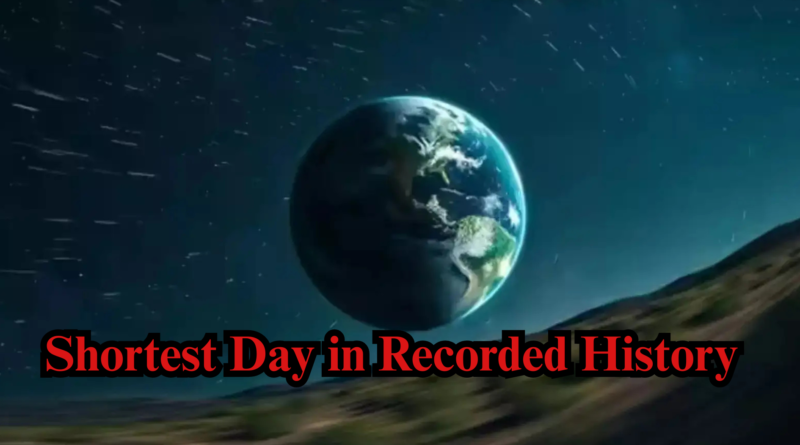Shortest Day in Recorded History – July 9
July 9, 2025, marked a significant moment in Earth’s timekeeping history, becoming one of the shortest days ever recorded. Atomic clock measurements revealed that this day was over a millisecond shorter than the standard 86,400 seconds that define a full day. Although imperceptible to the average person, this change has sparked intense interest among geophysicists and timekeeping experts worldwide.
The primary cause behind this rare phenomenon is believed to be subtle fluctuations in the Earth’s rotation speed. While the Earth typically rotates on its axis at a relatively constant pace, it is subject to minute variations due to gravitational interactions, particularly those involving the Moon. In this case, experts point to a specific lunar alignment that may have temporarily altered Earth’s angular momentum, effectively making the planet spin slightly faster than usual.
This isn’t the first time such a short day has been observed, but July 9 stands out due to the magnitude of the anomaly and the precision of its measurement. Advances in atomic clocks and satellite laser ranging have enabled scientists to detect these changes down to microseconds, offering a much clearer view of Earth’s subtle rotational quirks than ever before. These changes, while small, are crucial for maintaining accurate global time standards like Coordinated Universal Time (UTC).
Looking ahead, scientists anticipate similar anomalies on July 22 and August 5, 2025. These projected dates fall within the same lunar cycle, hinting that the Moon’s gravitational effects could be the main driving factor behind these rotation irregularities. Tidal forces, atmospheric pressure systems, and movements within Earth’s molten core also play roles in these fluctuations, making it a highly complex and interdisciplinary field of study.
Shorter days can have ripple effects, particularly in fields that rely on ultra-precise timekeeping. GPS systems, satellite communication, astronomy, and financial markets all depend on accurate time data. While these anomalies currently require only millisecond-level adjustments, any long-term shifts could force reevaluations of how we synchronize digital systems with Earth’s natural rhythms.
Although these fluctuations pose no immediate risk to daily life, they underscore the dynamic nature of our planet. Earth’s rotation, often taken for granted, is influenced by a host of celestial and terrestrial forces. The July 9 event serves as a reminder of the intricate balance that governs our world and how, even in the smallest shifts, there’s much to learn about the forces shaping our universe.




